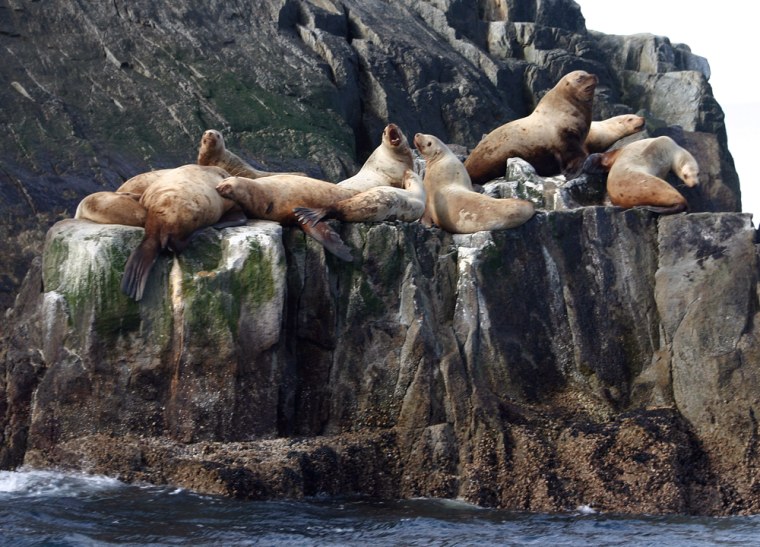Just call this steamy video, not streaming video. On an island in the Gulf of Alaska, cameras are providing streaming video and sound of some of the most intimate moments in the lives of endangered Steller sea lions.
This time of year, the cameras are trained on mothers nursing their pups at the small rookery on Chiswell Island, 35 miles south of Seward. During late May through early July, researchers get a peek into the breeding behavior of the dominant bulls.
Fortunately, the sea lions aren't shy. They're oblivious to the camera that zooms in when something particularly interesting occurs.
"We see a lot of things that, of course, are very private. But, of course, we are dealing with animals here," said research associate John Maniscalco, in charge of the remote video monitoring project for the Alaska SeaLife Center in Seward. "Sea lions don't have any sense of modesty."
While cameras have been trained on the sea lions since October 1998, the system was upgraded this fall to provide streaming video and sound on the Web at http://www.alaskasealife.org.
The sea lions weren't putting on much of a show Wednesday. Most appeared to be sleeping. One sea lion picked up his head and roared twice, before apparently going back to sleep. One pup played briefly with its mother before she returned to a state of deep relaxation.
Research technician Pamela Parker has been helping operate the cameras since the summer of 2001, documenting everything from bulls copulating to females giving birth to pups occasionally dying during her 10-hour shifts.
"I don't really get tired of it," said Parker, who wrote her master's thesis on Steller sea lions. "I guess my thing is, it doesn't get boring when you know who everyone is."
On Wednesday, the rookery was fairly packed, Parker said. She counted about 75 juveniles and adults and about 40 pups.
"Today is a really good day," she said.
Scientists hope a look into the private lives of Steller sea lions will help unravel the mystery of why numbers have declined so dramatically in southcentral and western Alaska, where the population is down about 70 percent since the mid-1970s.
According to the National Marine Fisheries Service, there are about 44,800 Steller sea lions in western Alaska. It looks like the population between 2000 and 2004 increased about 3 percent a year, an improvement over the declines in the 1980s and 1990s.
Steller sea lions were listed under the Endangered Species Act in April 1990.
The Steller sea lion population in eastern Alaska has fared better, with estimates of between 45,000 and 51,000 animals with numbers increasing 3 percent a year for the last 30 years.
While theories abound for why Steller sea lions in western Alaska took a dive, the reasons remain unclear. Some scientists believe it has to do with global warming and a change in the fish available for sea lions to eat. Others think it could be due to commercial fishing and competition for food. One popular theory is increased predation by killer whales.
"There are a lot of theories out there," Maniscalco said. "A lot of people agree right now it is a combination of things that caused the decline."
Hopefully, the cameras will help scientists get a better understanding of reproduction rates, the quality of maternal care and the survivability of pups on Chiswell Island, Maniscalco said. For example, the cameras can reveal whether the mothers are easily finding enough to eat or having to spend a lot of time away from the rookery foraging for food, he said.
Sixty-two pups were born this year at Chiswell Island. That's about average.
The Web cam will remain on until the mothers and their pups slowly leave the rookery this fall and head for more protected haulouts in Prince William Sound and just inside Resurrection Bay for the winter.
"By the end of December, the island is pretty much vacant," Maniscalco said.
